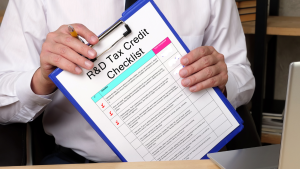If you’ve been thinking about installing solar panels, purchasing an electric vehicle, or upgrading your property’s energy efficiency, now is the time to take action. The One Big Beautiful Bill Act (OBBBA), signed into law on July 4, 2025, significantly rolls back many clean energy tax credits starting as early as the end of this year. Whether you’re a homeowner, business owner, developer, or manufacturer—these changes could impact your current plans and long-term strategy. Here’s a practical look at what’s going away, what’s staying, and how you can make the most of 2025 while key incentives are still available.
1. Planning Home Energy Upgrades or Solar Installations? 2025 Is the Deadline.
If you’ve considered adding solar panels, installing energy-efficient HVAC systems, or upgrading your insulation, don’t wait. Popular tax credits like the Residential Clean Energy Credit (25D) and Energy Efficiency Home Improvement Credit (25C) are ending December 31, 2025. Think of common improvements: rooftop solar, battery storage, heat pump water heaters, energy-efficient windows. These upgrades have offered up to a 30% tax credit in recent years—but after 2025, they’ll no longer qualify under current law. What to consider:
- If you’re scheduling an installation, make sure installation is complete by year-end.
- Delays could mean missing out entirely on the credit.
- Builders and developers of new homes should also act fast to use the 45L credit for energy-efficient construction before it disappears.
Planning Tip: If your project relies on clean energy tax incentives—move forward in 2025. Most credits expire or become severely restricted starting in 2026, and the longer you wait, the more risk (and cost) you may face.
2. Thinking About Buying an Electric Vehicle or Installing Charging Stations? Don’t Wait.
Tax credits for new and used electric vehicles (30D and 25E) end September 30, 2025. Credits for EV charging equipment expire June 30, 2026. This includes:
- Personal vehicles for everyday use
- Commercial fleet purchases
- Charging infrastructure for home or business use
What to consider:
- Purchasing an EV this year could mean thousands in savings compared to buying in 2026.
- Businesses thinking about converting fleets or installing chargers should move those plans forward to secure available credits.
3. Manufacturing Clean Tech Components? Know the New Rules.
The Advanced Manufacturing Production Credit (45X) is being phased out—especially for components like wind turbine parts and critical minerals—with phaseouts starting in 2027 and ending completely by 2033. On top of that, new Foreign Entity of Concern (FEOC) rules apply, disqualifying projects tied to certain foreign suppliers. What to consider:
- Supply chain matters now more than ever. If a component or technology is sourced from a restricted country, the tax credit may no longer apply.
- This applies to manufacturers, installers, and project developers.
- It’s a good time to review where your materials and equipment are coming from.
4. What About Carbon Capture, Clean Fuel, or Storage? Some Incentives Remain.
While many credits are ending, some are sticking around—but with changes:
- Carbon Capture (45Q): Still available and even expanded, offering up to $85/ton for point-source capture qualified projects and $180/ton for direct air capture qualified projects on which construction begins before 2033.
- Clean Fuel Production (45Z): Extended through 2029, but with reduced value and tighter sourcing rules.
- Energy Storage, Geothermal, and Nuclear: Still eligible for credits—assuming projects comply with domestic content and FEOC rules.
What to consider:
- If your business is in industrial processing, fuel production, or energy storage, opportunities still exist—but planning and compliance are key.
5. Take Action Now—Before Deadlines Close the Door
The clock is ticking. Many of these credits will not be available in 2026, and for some—like EV purchases—the window closes even sooner. Any postponement could mean leaving thousands of dollars on the table. Here’s what to prioritize now:
- Finalize any planned purchases—solar panels, EVs, battery storage systems, HVAC upgrades—before year-end 2025 (or September 30 for EVs).
- Start construction on qualifying clean energy or efficiency projects immediately to meet in-service or construction-start deadlines.
- Accelerate fleet or equipment upgrades if you’ve been considering commercial EVs or electric infrastructure—these credits won’t wait.
- Review supply chains now—especially if you’re in clean tech or fuel production. Projects with ties to restricted countries may already be ineligible for credits due to FEOC rules.
- Update your financial models—if your investment was counting on a tax incentive in 2026 or beyond, you’ll need a new plan.
This isn’t just a planning opportunity—it’s a countdown. Once these credits expire, they’re gone, and there’s no indication they’ll be coming back.
Mark Your Calendar:
Many popular energy-related tax credits have strict cutoff dates under the new law. This quick-reference table outlines what’s changing and when, so you can plan accordingly and take action in 2025.
| Tax Credit / Incentive | What It Covers | New Deadline | Action Needed |
| 30D – Clean Vehicle Credit (New EVs) | New electric vehicle purchases (meets sourcing rules) | September 30, 2025 | Purchase and place in service before deadline |
| 25E – Used Clean Vehicle Credit | Qualifying used EV purchases | September 30, 2025 | Same as above |
| 45W – Commercial Clean Vehicles | Business or fleet EV purchases | September 30, 2025 | Act before deadline to claim credit |
| 25C – Energy Efficient Home Improvements | Heat pumps, insulation, windows, etc. | December 31, 2025 | Complete upgrades & claim credit by year-end |
| 25D – Residential Clean Energy | Solar panels, battery storage, geothermal, etc. | December 31, 2025 | Install and place in service in 2025 |
| 45L – Energy Efficient New Homes (Builders/Developers) | New home construction with energy efficiency features | June 30, 2026 | Certify & sell or lease by deadline |
| 30C – Alternative Fuel Refueling (EV Chargers) | Charging stations (business or residential) | June 30, 2026 | Install and operational by mid-2026 |
| 45X – Clean Manufacturing Production | Components like batteries, solar panels, minerals | Phased out 2027–2033 | Reassess plans & sourcing now |
| 45Z – Clean Fuel Production | Low-carbon fuels, including SAF and biofuels | December 31, 2029 | Plan for reduced rates & stricter rules |
| 45Q – Carbon Capture | Carbon capture, use, or storage | Still available (with changes) | Review eligibility under new FEOC rules |
Final Thoughts: Make 2025 Count
These changes could significantly shift the economics of energy-efficient investments and clean technology. If you’re thinking about taking advantage of credits for solar, EVs, or manufacturing incentives, the best time to act is now. We’re here to help you sort through the details and make the most of what’s still available—before these opportunities sunset. Contact us today!




